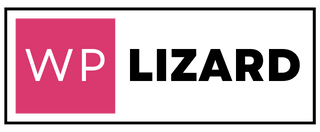Tokyo: Japan will release another 300,000 metric tons of rice from its emergency stockpiles through July in an urgent attempt to address a nationwide rice shortage and bring relief to consumers struggling with surging prices, the government announced on Friday.
The decision follows a sharp spike in retail rice prices, which have roughly doubled over the past year due to a combination of extreme summer heat that damaged harvests and a sharp increase in demand fueled by a tourism boom. The escalating cost of the nation’s staple food has emerged as a major political concern, particularly for Prime Minister Shigeru Ishiba as the country heads toward upper house elections in July.
This new release will add to the 310,000 tons already distributed from stockpiles since March, marking an unprecedented intervention by the government to stabilize rice prices. It was the first time Japan tapped into its emergency reserves to cool the market.
To further strengthen its response, the government has extended the timeframe for replenishing the released rice stockpiles from one year to five years. Under existing policy, the government is required to purchase an equivalent amount of rice to replace what is withdrawn from reserves.
In another key move, authorities will allocate a portion of the stockpile to bypass traditional wholesaler routes, allowing faster distribution to end consumers and retailers. However, logistical challenges remain—only 2% of the 212,000 tons auctioned in March had reached retailers and restaurants by mid-April, as the rice still requires milling and packaging after release, according to the Ministry of Agriculture, Forestry and Fisheries.
Also Read | Lai Ching-te Visits Troops, Warns of Possible Chinese Escalation
To ensure a consistent supply, the government will conduct auctions for 100,000 tons of stockpiled rice each month from May through July.
The crisis has also altered consumer habits in a country known for its deep cultural and culinary attachment to high-quality domestic rice. With domestic prices soaring, many Japanese consumers and restaurants are turning to more affordable imported alternatives. Despite heavy import tariffs, foreign rice brands are now significantly cheaper.
Also Read | SpaceX Starship 9 Closer to Launch as FAA Approves Key Licensing Changes
Retail giant Aeon Co. recently announced it would begin selling 100% U.S.-produced Calrose rice starting in early June, following the introduction of a Calrose-Japanese rice blend in April.
According to supermarket data from the week ending May 4, the average price for a 5 kg bag of rice stood at 4,214 yen (approximately $28). While that figure remains twice as high as it was a year ago, it did represent the first week-on-week price drop in over four months—down by 19 yen.



